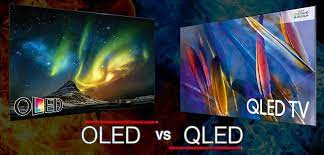OLED TV: What to know
Great color saturation and a super slim design
Organic Light-Emitting Diode technology -- better known as OLED -- has been around for the best part of a decade and is used in TVs, as well as phones and other small-screen, portable devices.
OLED is a much simpler setup than traditional LCD, thanks to a carbon-based organic compound that produces light upon an electrical current passing through.
OLED is a much simpler setup than traditional LCD, thanks to a carbon-based organic compound, which produces light when an electrical current is passed through it. This means that each of the millions of pixels in an OLED is self-illuminating and can be switched on or off individually, ensuring zero light bleed from neighboring pixels. Indeed, as they can be completely switched off, black levels are absolute, and the contrast is great.
OLED TV Advantages
Getting brighter by the day
OLED TVs are also known for excellent color saturation and accuracy, although brightness doesn't tend to run as high as top-end LED TVs. That's because the harder you drive the TV to be brighter, the shorter the lifespan of the organic compound, plus the increased risk of so-called "burn-in." More recent OLED TVs are finding ways around that though, like including heat sinks in their panels to drive them harder while keeping them cool, as well as bringing in new tech to help them too -- like Micro Lens Array.
This involves a layer of tiny lenses sitting on top of the OLED pixels, which better focuses the light being emitted towards the viewer. Consequently, the TV doesn't have to work any harder to create figures like 2000 nits of peak brightness.
QD-OLED TVs: What to know
Brighter than traditional OLED and better color volume
QD-OLED is a new take on OLED, developed by Samsung and used in its OLED range, and also in Sony's new flagship. The name derives from the Quantum Dot technology Samsung uses in its QLED range, with an adapted OLED approach. The idea? It brings the strengths of both to one single screen.

